By JULIE MINDA
"The most affordable housing unit is the one that you're in."

Dowdall
That credo shared by Emily Dowdall, a staffer at a community development financial institution, helps to explain why Bon Secours Mercy Health last year allocated hundreds of thousands of dollars in direct payments to community members falling behind on
bills or in danger of eviction or foreclosure.
The one-time aid, given out with very few restrictions, had the intended effect of increasing housing security for people in two neighborhoods surrounding the health system's Cincinnati headquarters.
Bon Secours Mercy Health undertook the program, dubbed the Cincinnati Housing Response Program, after 2016 community assessments of Cincinnati's Bond Hill and Roselawn neighborhoods revealed housing concerns and after 2019 surveys of residents determined
that many of them were worried that they would not be able to maintain their housing.
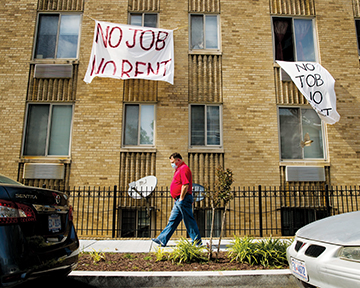
"No Job No Rent" signs drape from apartment windows in Northwest Washington, D.C., May 20, 2020. While government agencies put a moratorium on evictions and foreclosures for more than a year during the pandemic, housing stability was — and remains
— a pressing challenge nationwide.
Credit: Andrew Harnik/Associated Press
What they wanted was immediate, direct financial assistance. And that is exactly what Bon Secours Mercy Health delivered to 174 households from December 2020 through October 2021 — a window of time when the pandemic had worsened the financial picture
of many people living in the targeted neighborhoods.
Bon Secours Mercy Health worked with nonprofit organizations already active in the community to identify people experiencing housing instability, make them aware of the availability of the funds and guide them in applying for the financial assistance.
A follow-up report says that the aid achieved the goal of increasing housing stability
among fund recipients.

Smith
"We listened to the community" and responded, says Kendra Smith, vice president of community health for Bon Secours Mercy Health. "We wanted to address social determinants of health, but the question for health care providers like us is, where is our
space" in this work? "This was a great opportunity to explore community partnerships, with us as convener. We tapped into well-established community partnerships, helped them build capacity and leveraged their expertise."
Through the cracks
The Cincinnati area experienced shutdowns and cutbacks at the start of the pandemic that played out as more job and income instability in the working-class neighborhoods of Bond Hill and Roselawn, says Dowdall,
a policy director for Reinvestment Fund's research group. That organization evaluated the Cincinnati Housing Response Program's impact for Bon Secours Mercy Health.
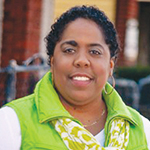
Wilson
Many in Bond Hill and Roselawn were struggling to make ends meet before the pandemic. People burned through any funds they had at hand and fell behind on rent, mortgage, utility, tax and other payments. Even people who had never needed assistance before
began having trouble with the bills, says Hope Wilson, director of operations and housing program manager for Working in Neighborhoods, or WIN, a Cincinnati nonprofit that Bon Secours Mercy Health partnered with.
Pandemic-related rent and mortgage moratoriums and government direct payments paid for through the Coronavirus Aid, Relief, and Economic Security Act provided temporary relief for some, but the underlying challenges remained.
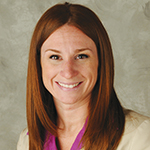
Hemenway
Gina Hemenway, community health director for Bon Secours Mercy Health's Cincinnati region, explains, "Threats of eviction and foreclosure were not new with the onset of COVID-19, but were merely exacerbated. Those already in housing and financial trouble
found themselves falling further behind. Those with new issues of housing and financial instability simply were given more time to find a solution due the moratoriums. It was understood that the moratoriums would end at some point."
The goal of Bon Secours Mercy Health's Cincinnati Housing Response Program was to ensure renters and homeowners were in good standing when that happened, she says.
Listen and learn
Before the pandemic, Bon Secours Mercy Health had secured nearly $300,000 through Accelerating Investments for Healthy Communities, a grant program from the Robert Wood Johnson Foundation and the Center for Community Investments. And Bon Secours Mercy Health contributed nearly $200,000 of its own funds to the
Cincinnati Housing Response Program.
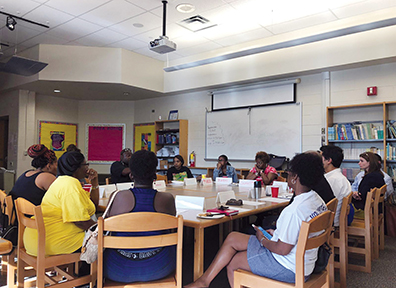
Residents of the Bond Hill and Roselawn communities in the greater Cincinnati area gather at Roselawn Condon School in spring 2019 to discuss their housing priorities with Bon Secours Mercy Health representatives. The health system convened four such
meetings to better understand conditions in the communities surrounding the system's headquarters campus.
Credit: Photo courtesy of Cohear
Bon Secours Mercy Health originally planned to use the capital for affordable housing construction. But the 2019 surveys of community members revealed they did not want that; they wanted to receive direct aid to stabilize their household finances.
Bon Secours Mercy Health pivoted, and in late 2020 and throughout most of 2021, it engaged with Cincinnati nonprofit Housing Opportunities Made Equal, or HOME, in identifying renters and with WIN in identifying homeowners experiencing housing instability.
Staffers with those two agencies spread the word about the availability of funds and invited Bond Hill and Roselawn residents experiencing housing unstability to apply.
Eligible renters could receive up to $1,000 per household and homeowners up to $5,000. The one-time financial assistance bridged them through some immediate shortfalls.
HOME and WIN staffers also identified additional sources of financial aid for some people in the program. When community members received the Bon Secours Mercy Health assistance, they also became connected to HOME and WIN's bread and butter services,
including financial education, and links to job programs and social services.
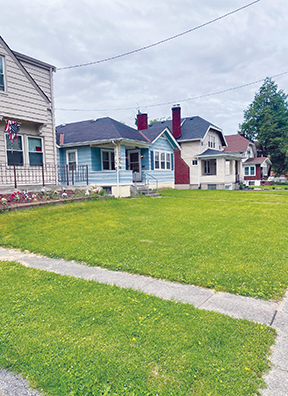
Bond Hill is one of the communities where Bon Secours Mercy Health made direct one-time payments to qualified applicants. The program helped residents bridge immediate financial shortfalls.
HOME and WIN staff helped with communication with landlords and mortgage companies and advocated on the fund recipients' behalf in disputes.
Hemenway says by connecting fund recipients "to financial counseling in addition to providing resources, our aim was to expand financial knowledge, education of additional community resources, and set residents on a path to financial and housing stability
that community partners could continue to nurture."
Stopgap
According to HOME and WIN staffers, recipients used the financial assistance to pay missed rent or mortgage payments, late fees, delinquent utility bills or other home or apartment living expenses.

Brown
The money was a stopgap until other forms of income kicked in. Janet Brown, manager of tenant advocacy for HOME, notes that Social Security and unemployment payment systems had been disrupted due to the pandemic, and the assistance gave people some breathing
room until those checks came in more reliably. Other recipients had found jobs after being let go, or their furloughs were ending, but they had not yet caught back up with bills.
Reinvestment Fund and Greater Ohio Policy Center analyzed the impact of the Cincinnati Housing Response Program. In their joint report, those organizations said that 90% of renters and all homeowners reached through the Bon Secours Mercy Health program
evaluation remained in the same housing unit up to seven months after receiving assistance. That stability is especially important as about two-thirds of those interviewed reported that someone in their household had a chronic disease or ongoing mental
health challenge.
Reinvestment Fund and Greater Ohio Policy Center said it was difficult to isolate the neighborhood-level impact of the direct payments from the Cincinnati Housing Response Program in part since there were funds from multiple government pandemic response
programs flowing into the neighborhood simultaneously. But they estimated that without all the financial assistance there could have been double the number of foreclosure filings in the affected communities and evictions may have been up by as much
as 40%, once the moratoriums were lifted.
Smith says when it comes to addressing housing concerns, the Bon Secours Mercy Health team learned that "stabilization is as important as new housing," and that stabilization should be done in the way that the community says it should be done.
"At the end of the day, this aid was short term, but a goal is to be thinking of how we can be more present in partnering long term in these housing conversations," says Smith. "This was a great baseline for us, and it changes the conversation about what
it is to invest in housing."